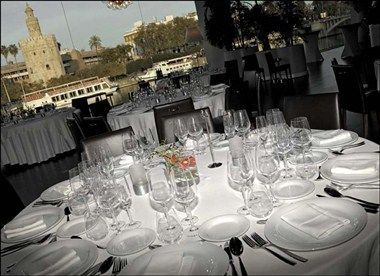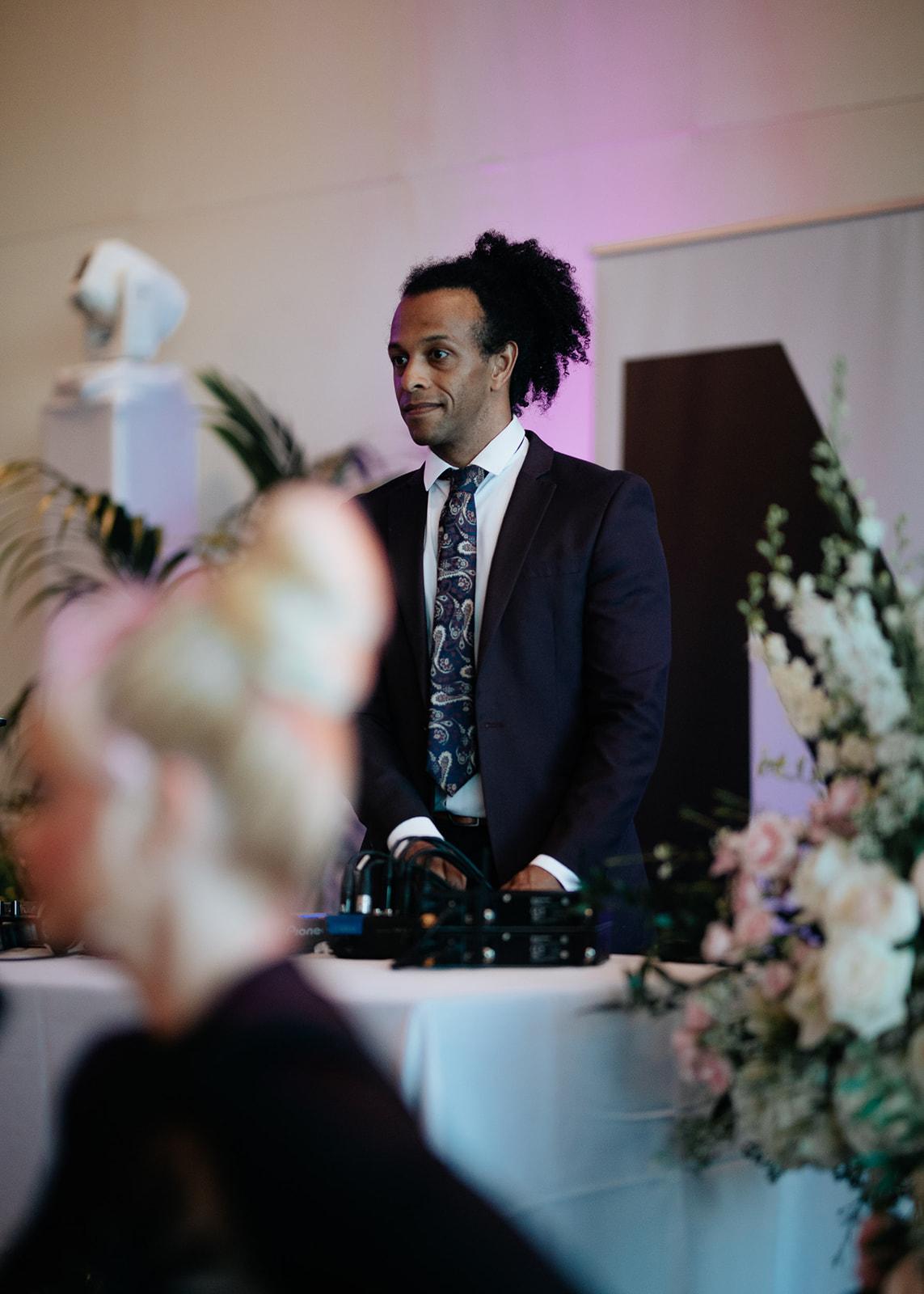- Abades Triana Restaurant

Suchen
Tell us about your event, find venues, and add them to your venue list.Send request
Review your selected venues and send request
Booking
Vergleichen Sie Angebote und buchen Sie den perfekten Ort für Ihr EventAbades Triana Restaurant


About us
ABADES TRIANA befindet sich an der Hauptstraße des Viertels Triana, in der Betis Street, einem Restaurant, dessen privilegierter und großer Glasraum ein spektakuläres Fenster zur Stadt bietet Das Hauptmerkmal von ABADES TRIANA ist, dass es sich um ein Fensterrestaurant handelt, das Platz für bis zu 400 Personen bietet. „The Cube“ ist ein bevorzugter Bereich des Restaurants, der in der Luft zu hängen scheint und auf dem Fluss Guadalquivir zu schweben scheint. ABADES TRIANA ist ein geräumiges Restaurant, in dem jede Art von Veranstaltung, Kongress, Präsentation, Incentive, Geschäftstreffen usw. gefeiert werden kann. Obwohl ABADES TRIANA ideal für Feierlichkeiten, insbesondere Kongresse und Geschäftstreffen, ist es immer für alle geöffnet, die daran interessiert sind, die beste internationale und mediterrane Küche zu entdecken.
Details über den Veranstaltungsort
Restaurant Overview
- Modern
- Europäisch
- Mediterran
- Hip und trendy
- Modern
- Unternehmen oder Business
- Bars oder Clubs
Hours of Operation
- Montag - Sonntag1:30pm-12:00am
Ausstattung
- Räumlichkeiten (Draußen)
- Räumlichkeiten (Halbprivat)
- Räumlichkeiten (Privat)
- Räumlichkeiten (Draußen)
- Räumlichkeiten (Halbprivat)
- Räumlichkeiten (Privat)
Meetingräume
Meetingräume

Meetingfläche
Name | Raumgröße | Deckenhöhe | Maximum capacity | U-Form | Bankett | Halbkreis | Theater | Boardroom |
|---|---|---|---|---|---|---|---|---|
The Cube | 204,5 sq ft 16,9 x 15,0 sq ft | 8,2 Fuß | 28 | 16 | 28 | 25 | 25 | 24 |
Sala 1 | 1.765,3 sq ft - | 11,5 Fuß | 90 | 33 | 80 | 90 | 60 | 60 |
Sala 2 | 1.765,3 sq ft - | 11,5 Fuß | 90 | 33 | 90 | 90 | 70 | 70 |
Sala 3 | 164 sq ft - | 3,5 Fuß | 110 | 33 | 110 | 120 | 70 | 70 |
Reservé | 161,5 sq ft 9,8 x 16,4 sq ft | 11,5 Fuß | 16 | - | 10 | 16 | - | 16 |
Mirador Terrace | | 3.552,1 sq ft - | - | 400 | 40 | 200 | 400 | 150 | - |
PierTerrace | | 330 sq ft - | - | 350 | - | 200 | 350 | - | - |
Ort
Wegbeschreibung
Lokale Sehenswürdigkeiten







Nearby vendors












Abades Triana Restaurant - FAQs
Werfen Sie einen Blick auf häufig gestellte Fragen von Abades Triana Restaurant zu Gesundheit und Sicherheit, Nachhaltigkeit sowie Vielfalt und Inklusion.
Nachhaltige Praktiken
Diversität und Inklusion
Gesundheit und Sicherheit
Please explain, if applicable, the carbon offsetting options you offer to corporations.
Please provide, if applicable, an e-mail address for a contact who can address any follow up questions relating to sustainability and social impact goals and initiatives.
Has your hotel taken steps to reduce single-use plastics, such as removing plastic straws (except upon request for guests with disabilities), stirrers and cotton buds? If yes, please provide detail as to the steps you have taken to reduce single use plastics?
Does your hotel generate (onsite) or purchase (offsite) renewable energy (beyond your utility's standard offerings)? If yes, please describe your practices for generating or purchasing renewable energy.
Does your hotel engage in activities to protect & restore the natural environment in which it is located (i.e. trees planted, coral reef restored, etc.)?
Will your hotel be imposing any additional fees for cleaning services? If yes, please specify those fees.
Are specific cleaning/disinfection routines in place for pillows, duvets and their covers, headboard, bathrobe etc.? If yes, please describe.
Please include a link to your public report on community impact if applicable.
Please provide any other comments you wish to make regarding your efforts/initiatives to obtain certification in these programs.
Please provide, if applicable, an e-mail address for a contact who can address any follow up questions relating to diversity, equity, and inclusion.
Report an issue with this venue profile to the Cvent Supplier Network.
